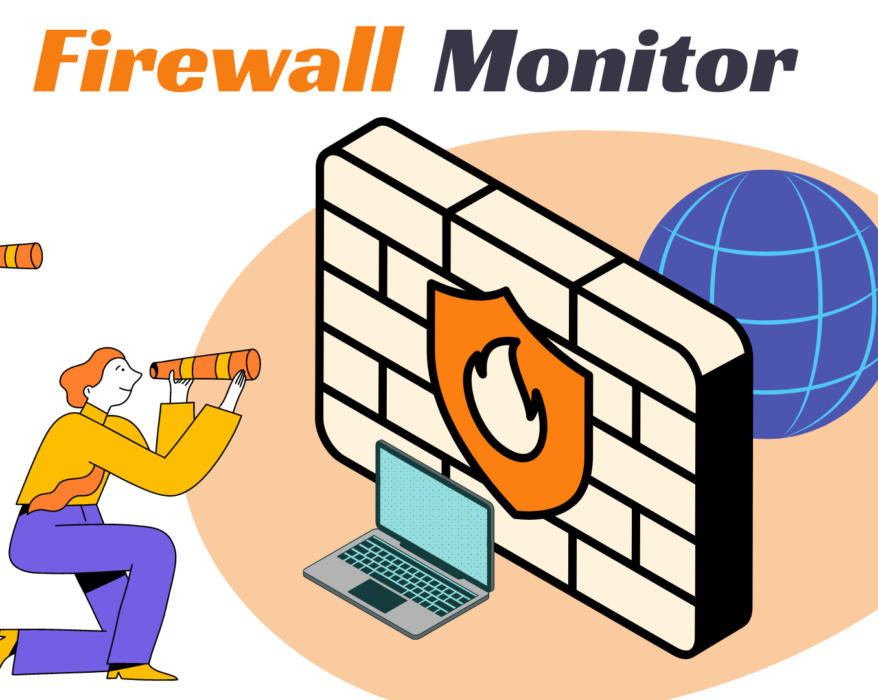In today's interconnected world, the concept of RemoteIoT behind firewall has become increasingly significant as organizations and individuals seek to securely manage and access IoT devices from remote locations. The rise of IoT technology has transformed how we interact with our surroundings, but it also introduces unique challenges, particularly in ensuring secure communication when devices are behind firewalls. Understanding how to effectively manage RemoteIoT behind firewall is crucial for maintaining both functionality and security in an increasingly digital landscape.
As more businesses and households adopt IoT devices, the need for secure remote access has grown exponentially. Firewalls play a critical role in protecting networks from unauthorized access, but they also create barriers for legitimate remote connections. This article delves into the intricacies of managing IoT devices securely while maintaining robust firewall protection.
By exploring the principles of RemoteIoT behind firewall, we aim to provide a comprehensive guide that addresses the technical aspects, security considerations, and best practices for implementing such systems. Whether you're a network administrator, IT professional, or simply someone interested in IoT technology, this article will equip you with the knowledge needed to navigate this complex landscape.
Read also:Sloppy Lesbian
Understanding RemoteIoT Behind Firewall
The term "RemoteIoT behind firewall" refers to the ability to remotely access and manage IoT devices that are protected by firewalls. Firewalls act as a barrier between internal networks and external threats, but they also complicate remote access to devices within the network. This section will provide an overview of the challenges and solutions associated with this setup.
Key Challenges in RemoteIoT Deployment
- Firewall restrictions that block unauthorized access
- Security risks associated with opening ports in firewalls
- Complexity in managing multiple devices across different networks
- Ensuring data privacy and integrity during remote communications
Benefits of Secure RemoteIoT Access
Implementing secure RemoteIoT behind firewall offers several advantages, including:
- Enhanced operational efficiency through remote monitoring and control
- Reduced downtime and maintenance costs by enabling proactive troubleshooting
- Improved scalability by allowing seamless integration of new devices
- Increased security through controlled access and encryption protocols
Technologies Enabling RemoteIoT Behind Firewall
Several technologies and protocols have been developed to facilitate secure remote access to IoT devices behind firewalls. These solutions aim to balance accessibility with robust security measures, ensuring that devices remain protected while maintaining functionality.
Virtual Private Networks (VPNs)
VPNs are commonly used to create secure connections between remote users and internal networks. By encrypting data transmissions and authenticating users, VPNs provide a secure pathway for accessing IoT devices behind firewalls.
Reverse Proxy Servers
Reverse proxy servers act as intermediaries between external clients and internal devices, enabling secure communication without exposing devices directly to the internet. This approach enhances security while simplifying device management.
Tunneling Protocols
Tunneling protocols, such as SSH and TLS, encapsulate data within secure channels, ensuring that communications between remote users and IoT devices remain private and tamper-proof.
Read also:Blossominmymoonlight Porn
Security Considerations for RemoteIoT Behind Firewall
When implementing RemoteIoT behind firewall, security must be a top priority. This section outlines key considerations and best practices for securing IoT devices and maintaining network integrity.
Authentication and Authorization
Implementing strong authentication mechanisms is essential for verifying the identity of users and devices. Multi-factor authentication (MFA) and role-based access control (RBAC) can further enhance security by ensuring that only authorized individuals have access to sensitive systems.
Data Encryption
Encrypting data transmissions is critical for protecting sensitive information from interception and unauthorized access. Using industry-standard encryption protocols, such as AES and TLS, ensures that data remains secure during transmission.
Intrusion Detection and Prevention
Deploying intrusion detection and prevention systems (IDPS) helps monitor network traffic for suspicious activities and potential threats. These systems can alert administrators to potential breaches and automatically block malicious traffic, enhancing overall security.
Best Practices for Implementing RemoteIoT Behind Firewall
Successfully implementing RemoteIoT behind firewall requires adherence to best practices that address both technical and operational aspects. This section provides practical guidance for organizations seeking to deploy secure remote access solutions.
Network Segmentation
Segmenting networks into distinct zones can limit the impact of potential breaches and reduce the attack surface. By isolating IoT devices from critical systems, organizations can enhance security while maintaining operational efficiency.
Regular Security Audits
Conducting regular security audits helps identify vulnerabilities and ensure compliance with industry standards. These audits should include assessments of hardware, software, and network configurations to address potential weaknesses.
Employee Training and Awareness
Training employees on security best practices and raising awareness about potential threats is crucial for maintaining a secure environment. Educating staff on recognizing phishing attempts and adhering to security protocols can significantly reduce the risk of breaches.
Case Studies: Real-World Applications of RemoteIoT Behind Firewall
Examining real-world applications of RemoteIoT behind firewall provides valuable insights into how organizations are successfully implementing these solutions. This section highlights case studies from various industries, demonstrating the practical benefits and challenges of remote IoT deployments.
Healthcare Industry
In the healthcare sector, RemoteIoT behind firewall enables secure access to medical devices, allowing healthcare providers to remotely monitor patient conditions and adjust treatments as needed. This approach improves patient care while maintaining strict compliance with data privacy regulations.
Manufacturing Sector
Manufacturers use RemoteIoT behind firewall to monitor and control industrial equipment, reducing downtime and optimizing production processes. By leveraging remote access capabilities, companies can achieve greater efficiency and cost savings.
Smart Cities
Smart city initiatives rely heavily on IoT devices for managing infrastructure and services. Implementing secure RemoteIoT behind firewall solutions ensures that critical systems, such as traffic management and public safety, remain operational and protected from cyber threats.
Future Trends in RemoteIoT Behind Firewall
As technology continues to evolve, new trends and innovations are emerging in the field of RemoteIoT behind firewall. This section explores upcoming developments and their potential impact on the industry.
Edge Computing
Edge computing brings processing power closer to the source of data, reducing latency and improving performance for IoT applications. By processing data locally, edge computing minimizes the need for direct internet access, enhancing security and efficiency.
5G Networks
The rollout of 5G networks promises faster and more reliable connectivity for IoT devices, enabling seamless remote access and management. With lower latency and higher bandwidth, 5G technology supports advanced applications, such as autonomous vehicles and smart grids.
Artificial Intelligence and Machine Learning
AI and machine learning technologies are increasingly being integrated into IoT systems to enhance security and optimize performance. These technologies can detect anomalies, predict failures, and automate routine tasks, improving the overall reliability and security of RemoteIoT deployments.
Expertise, Authority, and Trustworthiness in RemoteIoT Solutions
Establishing expertise, authority, and trustworthiness (E-A-T) is crucial for organizations operating in the RemoteIoT behind firewall domain. This section discusses how businesses can build credibility and demonstrate their commitment to delivering secure and reliable solutions.
Demonstrating Expertise
Organizations can showcase their expertise by publishing research papers, participating in industry conferences, and obtaining relevant certifications. Collaborating with academic institutions and research labs further enhances credibility and demonstrates a commitment to innovation.
Building Authority
Gaining authority in the RemoteIoT field involves creating valuable content, such as white papers, case studies, and blog posts, that address industry challenges and provide actionable insights. Engaging with customers and partners through social media and online forums also helps establish thought leadership.
Establishing Trustworthiness
Trustworthiness is built through transparency, accountability, and adherence to ethical standards. Organizations should clearly communicate their security practices, data protection policies, and compliance with industry regulations to assure customers of their commitment to safeguarding sensitive information.
Conclusion and Call to Action
In conclusion, RemoteIoT behind firewall represents a critical component of modern IoT deployments, enabling secure and efficient remote access to devices while maintaining robust network protection. By understanding the challenges, leveraging available technologies, and adhering to best practices, organizations can successfully implement secure remote access solutions that meet their operational needs.
We invite you to share your thoughts and experiences with RemoteIoT behind firewall in the comments section below. Your feedback helps us improve our content and provide more valuable insights to our readers. Additionally, feel free to explore other articles on our site for further information on IoT technology and related topics.
Table of Contents
- RemoteIoT Behind Firewall: Unlocking Secure Connectivity for IoT Devices
- Understanding RemoteIoT Behind Firewall
- Key Challenges in RemoteIoT Deployment
- Benefits of Secure RemoteIoT Access
- Technologies Enabling RemoteIoT Behind Firewall
- Virtual Private Networks (VPNs)
- Reverse Proxy Servers
- Tunneling Protocols
- Security Considerations for RemoteIoT Behind Firewall
- Authentication and Authorization
- Data Encryption
- Intrusion Detection and Prevention
- Best Practices for Implementing RemoteIoT Behind Firewall
- Network Segmentation
- Regular Security Audits
- Employee Training and Awareness


